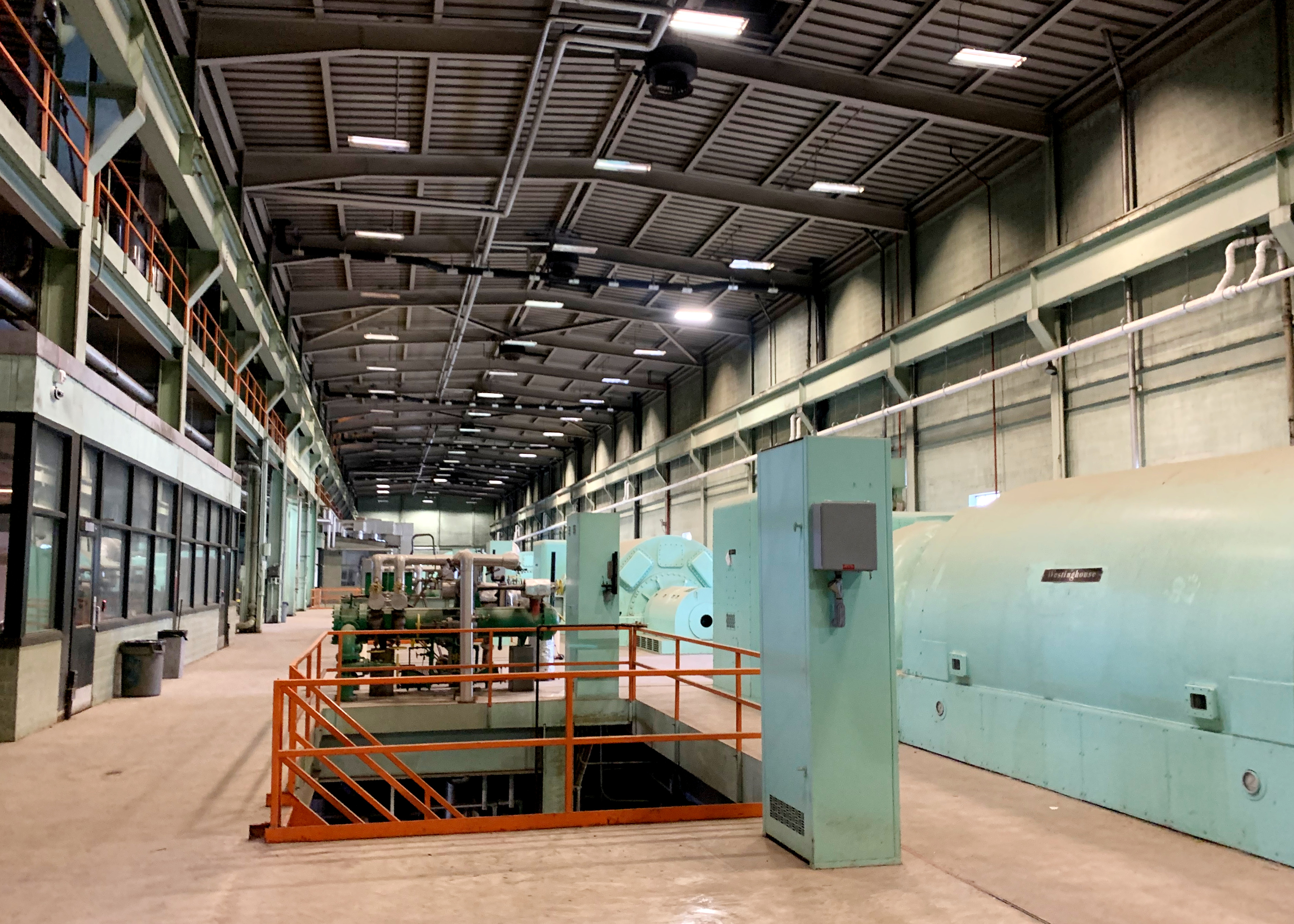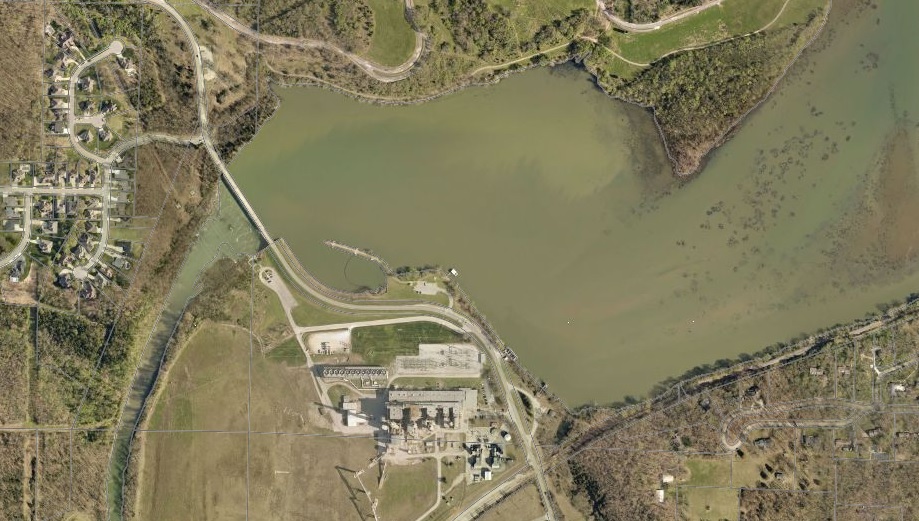Monday night marked the first reading of a three-pronged Springfield City Council bill that covers the costs of preparing Lake Springfield and the James River Power Station site for redevelopment.
On May 16, the City Council will hold a second reading — and potential vote — on a plan for pulling together money to support the redevelopment. A federal grant will cover part of the costs, but it requires the City of Springfield to chip in.
The upcoming bill would authorize acceptance of $100,000 in funding from the Springfield-based Hatch Foundation, the acceptance of $60,000 in funding from Springfield City Utilities authorized through a memorandum of understanding, and a corresponding budget amendment for the Springfield Department of Economic Vitality to start the process of planning future development at Lake Springfield.
Why care?
Whether you like to fish, paddle or hike around Lake Springfield, the future development of the James River Power Station property leaves much to the imagination. Parts of the property could also be used for commercial, government or educational purposes. Hydrological surveys will also shine a light on the exact condition of the lake’s health.
In September 2021, the Springfield City Council authorized an application for an $800,000 planning grant from the U.S. Economic Development Administration that would fund 80 percent of a planning project for the area surrounding Lake Springfield and the development of the decommissioned power plant.

Springfield Assistant City Planner Olivia Hough said that the U.S Economic Development Administration favors projects like the development of Lake Springfield that have the potential to impact a wide swath of southwest Missouri’s population.
“They really see this project has potential for regional impact due to the size of the project. We have at least 1,000 acres surrounding the decommissioned power plant and the lake that are publicly owned,” Hough said.
That calculation takes into account lands owned by the City of Springfield, Springfield City Utilities and by the Springfield-Greene County Park Board.
Excitement for more space to recreate
Zone 4 Councilman Matthew Simpson, whose zone of representation includes Lake Springfield, has done some research about sites in other parts of the country where decommissioned power plants are being made new with redevelopment.
“I’m really excited about this project,” Simpson said. “We see the adaptive reuse of other power plants across the county, there are some really impressive things being done, and they don’t have the surrounding natural beauty of the lake that we do.”
Hough said the federal grant is meant to boost, “economic development, especially economic development that’s innovative and creates resiliency, enhanced recreation opportunities.”

That means there could be more trails and more opportunities to go hiking, biking and walking around Lake Springfield, or from Springfield south into Christian County.
“We want to really have a very high focus on connecting our greenway trails, as I think you know, the greenway trail plans here are to connect to Ozark and the Chadwick Flyer will connect from downtown Springfield through the Lake Springfield area and to the community center in Ozark,” Hough said.
The City of Springfield’s $200,000 match for the federal grant consists of $40,000 committed by the Springfield Department of Environmental Services, $100,000 from the Hatch Foundation and $60,000 from Springfield City Utilities.
“For the Hatch Foundation contribution, we plan to bill them incrementally as costs are incurred throughout the project period, and that will be every six months for the two-year period of the grant,” Hough said.
Who does this affect?
Springfield City Utilities customers
Persons with interest in the southwest Missouri economy
Anglers
Paddlers
Outdoor enthusiasts
Conservationists or environmentalists
Members of Springfield’s business community
Environment, economy and public input
The project will begin in June 2022 with a detailed hydrological study of Lake Springfield and the surrounding James River watershed.
Hough explained that June will be a busy month in the life of the project. It’s also the time when the Springfield Department of Planning and Development will begin to ask qualified firms to provide requests for qualifications that will be used to select a consulting group to write a master plan for the Lake Springfield site.
“There will be robust community engagement throughout the project period,” Hough said. “It will be similar to the Grant Avenue Parkway engagement process.”
On May 2, the City of Springfield launched https://LakeSGFMasterPlan.com, a website specific to the Lake Springfield revitalization project.
A sustainable return on investment study will also start in June 2022, and is expected to last until June 2023.
At the end of two years of study and input, Springfield's planners will have a master plan for Lake Springfield and the 60,000-square foot power plant buildings. Hough said the plan should be complete by August 2024.
“Community organizations will be involved, including the Springfield-Greene County Park Board, the Board of Public Utilities, Southwest Missouri Council of Governments, Ozarks Transportation Organization, Watershed Committee of the Ozarks, Ozark Greenways, Environmental Advisory Board, James River Basin Partnership, Southwest Missouri Indian Center and many more,” Hough wrote in a memo attached to the bill.
After the implosion

Spirtas Wrecking Company oversaw the design of the implosion and falling for all four exhaust stacks once used in the coal-fired generation process at James River, plus all of the site teardown work that has taken place at the power plant for the past six months.
Construction of the lake and power plant began in 1955. Some parts of the plant, like the mint green-colored machinery covers and panels, still have a definite 1950s feel in 2022. The first generator at the plant went into service in 1957. At the time the plant opened, it was about three miles outside the Springfield city limits.
In 2020, City Utilities had a total of 117,075 customers from the residential, commercial and industrial sectors. City Utilities self-reported that 23 percent of the power its customers consumed in 2020 came from coal-fired generation, and 3 percent came from natural gas generation.
About 45 percent of the power in City Utilities’ portfolio comes from what the Federal Energy Regulatory Commission classifies as renewable energy sources. While the coal-fired power generators at the James River Power Station have been offline since 2017, a pair of natural gas turbine generators are still on the property. The turbines do not run continuously, but they are operated by Springfield City Utilities as consumer demand dictates.
The U.S. EDA’s Coal Communities Commitment allocates $300 million of EDA’s $3 billion American Rescue Plan appropriation to support coal communities as they recover from the economic challenges of the COVID-19 pandemic and to help them create new jobs and opportunities, including through the creation or expansion of a new industry sector.

